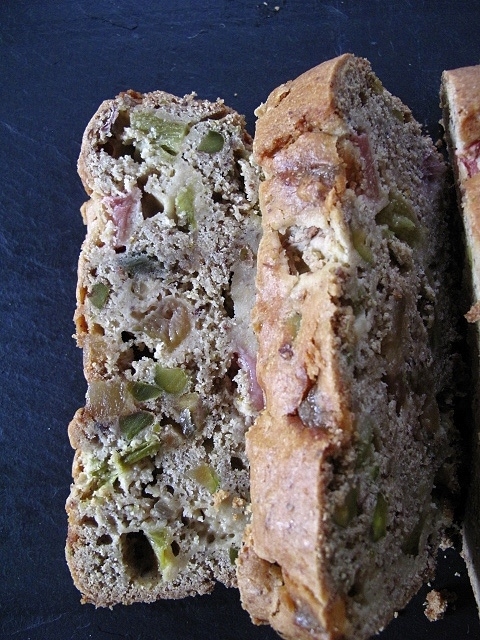
For my birthday this year, I decided to go the way of non-tradition and make a big pancake cake complete with chia berry jam, nut butter, coconut cream, and a pile of fresh berries. It was absolutely the best and may become a new tradition.

That was last month. When the Recipe Redux announced their June birthday and the end of a long season of monthly themed recipe challenges this month, it became obvious a pancake cake and a tasty homemade Brazil nut butter is a good way to celebrate the end.

For the past couple years, I’ve been periodically buying a few cups of raw Brazil nuts, roasting them slightly, and then grinding them into a rich and creamy nut butter. Compared to other nuts, they tend to be a little higher in fat and so turn into a nut butter much faster than other nuts and seeds, and without the really high-powered equipment. Additionally, Brazil nuts are one of the best sources of selenium, an essential trace mineral. Selenium content in foods is directly related to soil-mineral levels, and at least in my part of the country, the selenium content in soil is low. Growing up raising sheep, we had to give new lambs a selenium shot to ward off a selenium-depletion muscle disease. Even amongst Brazil nuts, selenium content will vary by location, but they do still tend to have a lot of it compared to other foods.
Selenium is primarily part of a master antioxidant enzyme in the body, meaning it neutralizes free radicals and dampens inflammation. It also plays along with other antioxidants, vitamins C and E, and helps them to reuse (recycle) themselves. Selenium is important for a healthy immune response, making it especially significant for immune conditions such as cancer, autoimmune disorders, healthy aging, and is absolutely essential for activation of the thyroid hormones.
For many individuals, a Brazil nut a day, or even a couple a few times per week, or periodically slathering your celebratory pancakes with decadent Brazil nut butter, will meet one’s selenium needs.
Beyond focusing just on selenium and Brazil nuts, all the nuts and seeds have differing and essential vitamins, minerals, and healthy fats, and this is why I always encourage rotating nuts, seeds, and their butters routinely in the diet.



For this pancake cake, I doubled my favorite go-to pancake recipe, made extra large pancakes, made a quick berry chia jam, and scooped the solids off the top of a can of full-fat coconut milk, whipped it along with a little orange blossom water, and of course, added that Brazil nut butter. I then put a different layer of filling between each pancake and topped them off with extra chia berries. This recipe was inspired by a Pancake Cake in Green Kitchen Stories new family cookbook, but I definitely spun it in my own direction. I encourage you to do the same.

Birthday Pancake Cake with All the Toppings and an Essential Brazil Nut Butter, serves about 4
my favorite pancake recipe (or yours)
whipped coconut cream
Brazil Nut Butter (see below)
Berry Chia Jam (see below)
fresh sliced berries, as desired
- Prepare and make all the various components above. Then layer one filling between each pancake and top with additional berry chia jam or fresh berries.
- Cut into cake wedges and serve with additional berries, jam, coconut cream, and nut butter.
Brazil Nut Butter, makes about 1 cup
2 cups raw Brazil Nuts
- Preheat the oven to 275 degrees F. Spread the nuts on a baking sheet and roast for about 20 minutes.
- Remove from the oven and add to a high-speed blender or food processor. Process for about 5-8 minutes, until the mixture becomes creamy and thin. Scrape down the sides as needed throughout.
- Store extra nut butter in a glass container in the fridge.
Berry Chia Jam, adapted very slightly from Little Green Kitchen
2 cups fresh or frozen berries
2-3 dates, pits removed and chopped
2 Tbs. chia seeds
a splash of water
- Add the berries and dates to a small saucepan and bring to a boil. Add a splash of water and stir in the chia seeds. Bring back to a boil, then turn off the heat, stir again and allow to sit for about 15 minutes to thicken up. Stir a couple times throughout to keep clumps from forming.
Reference:
Higdon, J. (2001). Selenium. Linus Pauling Institute. Retrieved from https://lpi.oregonstate.edu/mic/minerals/selenium.









